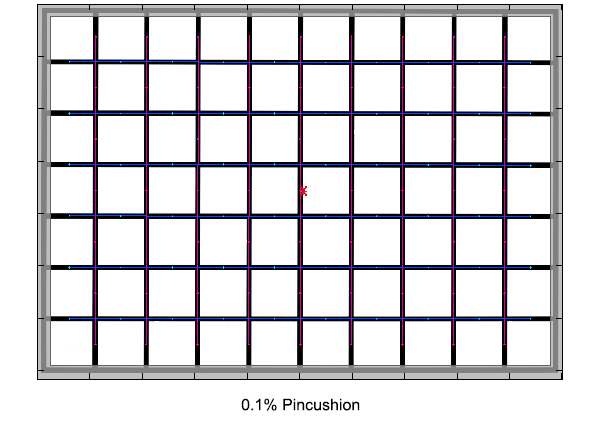|
Sigma 85mm f/1.4 HSM DG ART ( Nikon FX ) - Review / Test - Analysis |
|
Lens Reviews -
Nikon / Nikkor (full format)
|
|
Page 2 of 3

Distortion
The Sigma 85mm f/1.4 HSM DG Art produces images that are essentially free of distortion (0.1%).

Vignetting
The vignetting characteristic is rather typical for such a lens. There’s some substantial light falloff at fully open aperture (around 1.3EV), which however is a little less than on some competing lenses. Stopping down to f/2 reduces the issue drastically and the vignetting is pretty much gone from f/2.8 onward.

MTF (resolution)
The lens produces outstanding quality on the 24MP sensor of the D3x test camera. Wide open, the center and border resolution is already excellent with very good corners. Stopped down to f/2.8 and beyond, the lens delivers superb quality across the whole image frame. Diffraction is limiting the quality from f/8 onward but f/11 remains easily usable.
The lens shows a slight amount of focus shift when stopping down.
The centering quality of the tested lens was good. Field curvature is low.
Please note that the MTF results are not directly comparable across the different systems!
Below is a simplified summary of the formal findings. The chart shows line widths
per picture height (LW/PH) which can be taken as a measure for sharpness.
If you want to know more about the MTF50 figures you may check out the corresponding
Imatest Explanations

Chromatic Aberrations (CAs)
The outstanding resolution is accompanied by very low CAs (chromatic aberrations) with an average pixel width of less than 0.3px at the image borders at f/1.4, further decreasing by stopping down. In real-world terms this basically equals to none.

Bokeh
Enough of the outlandish sharpness … let’s check the softness part thus the rendering of the out-of-focus blur aka bokeh. After all the Sigma is primarily designed for shallow depth-of-field photography. It does a very good job here albeit it’s not perfect.
The important background is rendered smoothly with creamy contrast transitions. However, the less critical image foreground is a tad nervous in comparison.
Out of focus highlights are nicely rendered. The inner discs are very even and the discs show no outlining (but some bokeh fringing, see next section). Stopping down has no negative effects until f/2.8.
That being said, the discs deteriorate towards the image corners (cat’s eyes) as shown below. This is a vignetting effect and as unfortunate as it may be it affects all full format lenses (when used on full format cameras).

Bokeh Fringing
Bokeh fringing (non-coinciding focal planes of the various colors) is a common issue with relatively fast glass. As you can notice below the halos have different colors - magenta (red + blue) in front of the focus point and green beyond. Unlike lateral CAs, bokeh fringing cannot easily be fixed in post processing.
Typical for most fast primes, especially ultra fast ones, the Sigma shows quite some bokeh fringing at large aperture settings. The issue is mostly gone from f/5.6 onward.
In addition, these shots also illustrate the slight amount of focus shift when stopping down that was mentioned in the MTF section.
|